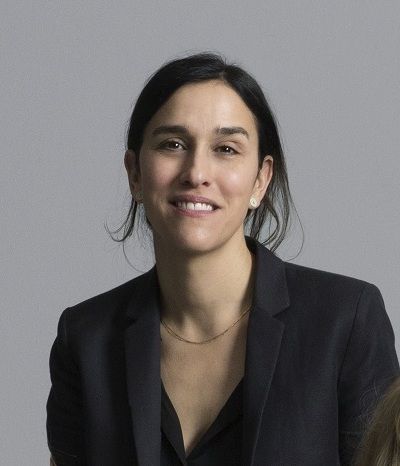(This article on Jewish film releases in Australia in January and February 2016 appeared in The Australian Jewish News on 24 December 2015.)
“Goosebumps” (Roadshow, January 14) is based on the works of R.L. Stine, the mega-popular Jewish writer of children’s horror fiction. Stine – often called the “Stephen King of children’s literature” – is the author of hundreds of novels, which provide the basis for this 3D live-action/computer-animated children’s horror/comedy film. The film stars Jack Black (playing the character of Stine), Dylan Minnette as a teenage boy who moves to a new town, Odeya Rush as “Hannah Stine” – R. L. Stine’s daughter (in real life, Stine only has a son), In the film, Stine (Black) keeps all the ghosts and monsters in his books locked up in manuscripts. Zach and a friend unintentionally open one of Stine’s books, leading to the release of every ghost, monster, and villain. You can guess the rest. Stine briefly appears in the film playing a high school drama teacher, credited as “Hallway Parker”.
“Spotlight” (January 28) provides a gripping dramatisation of the child sex abuse cases that occurred in the Catholic Church, particularly in Boston. Although this is not a “Jewish” story, it certainly is one of the most significant religious films of the year, and the events that took place had a profound impact on the ability of the US Catholic bishops to respond to other crises during and after that time. That held important implications for Jews, as my (upcoming) review will make clear. Directed by Tom McCarthy, and starring Mark Ruffalo, Michael Keaton, Rachel McAdams, Liev Schreiber and John Tucci.
“Steve Jobs” (Universal, February 4) is the much-anticipated “biopic” about the late Steve Jobs, co-founder of Apple. Although Jobs (played by Michael Fassbender) was not Jewish, the film has lots of Jewish connections: written by Aaron Sorkin (Jewish), based on the book by Walter Isaacson (also Jewish), it includes the characters of (early Apple employee) Joanna Karine Hoffman (Polish Jewish father), technology journalist Walt Mossberg (Jewish), Andy Hertzfeld (Jewish, played by Jewish actor Michael Stuhlbarg from “A Serious Man”) and journalist Joel Pforzheimer (Jewish). Seth Rogen also plays Steve Wozniak (who is not Jewish). Australian Sarah Snook (not Jewish) and Jewish actor Adam Shapiro also appear. The film has received four Golden Globe nominations, including best actor/drama (Fassbender), supporting actress (drama) for Kate Winslet, screenplay for Aaron Sorkin and original score.
“Zoolander 2” (Paramount, February 11), the latest from Ben Stiller, has much to live up to, given the cult status of the 2001 original satirical film (now termed “Zoolander 1”). Stiller directs and reprises his role as model Derek Zoolander, and is joined by actors Owen Wilson, Will Ferrell, Kristen Wiig, Christine Taylor (Stiller’s wife), newcomer Cyrus Arnold as “Derek Zoolandger Jr”, Billy Zane as himself, Justin Bieber as in himself, Kanye West, Kim Kardashian, Milla Jovovich, Macaulay Culkin as himself, Miley Cyrus as herself, Lenny Kravitz as himself and Benedict Cumberbatch.
In the original “Zoolander”, Ben’s father Jerry Stiller’s memorable portrayal of “Maury Ballstein” has been called one of the “25 greatest Jewish characters in movies”. He spends the whole film with visible chest hair topped by a Magen David. A classic Ballstein quote: “I got a prostate the size of a honeydew and a head full of bad memories. It’s time to set the record straight.”
“Hail, Caesar” (Universal, February 18): Advance word on the new Joel and Ethan Coen comedy “Hail, Caesar” is that it is one of the most “Coen-y brothers films yet”. So says “The Guardian”, inventing a new, and as yet unheard of word, “Coen-y”. Set for its international premiere at the opening night of the Berlin Film Festival (a frequent location for Jewish-themed films) in February, with an Australian cinema release a week later, “Hail Caesar” features Josh Brolin as a Hollywood “fixer” named “Eddie Mannix”, working on a new film called “Hail, Caesar”, which stars actor Baird Whitlock (George Clooney), who in turn is kidnapped. Mannix has the job of bringing him back.
When this Jewish writing/directing/producing pair puts out a new movie, the film world takes notice. From “Barton Fink” to “The Big Lebowski” to “A Serious Man”, their frequently bizarre – and often Jewish – characters have set new milestones for creativity. This time, the cast also includes Ralph Fiennes, Jonah Hill (as a Jewish producer), Scarlett Johansson, Frances McDormand, Tilda Swinton (as Hedda Hopper), Channing Tatum and notable Jewish actors Fred Melamed (“A Serious Man”) and David Krumholz as Communist screenwriters.
“Son of Saul” (Sony, February 25) premiered in Australia at the Jewish Film Festival in October, and is widely tipped as a major contender for the “best foreign language” Oscar, already holding a nomination for the Golden Globe best foreign language film. From Hungary (in Hungarian), early reviews indicate that “Son of Saul” will soon join the ranks of some of the most noted dramatic films about the Holocaust.
The date is October 1944, and the place is Auschwitz-Birkenau. Saul Ausländer (Géza Röhrig) is a Hungarian member of the Sonderkommando, the group of Jewish prisoners isolated from the camp and forced to assist the Nazis. While working in one of the crematoriums, Saul discovers the corpse of a boy who he believes is his son. As the Sonderkommando plans a rebellion, Saul decides to carry out an impossible task: save the boy’s body from the flames, find a rabbi to recite the Kaddish and offer the boy a proper burial. A true triumph of the spirit.
(Photo of Ben Stiller in “Zoolander 2” below.)




 Posted by donperlgut
Posted by donperlgut 






